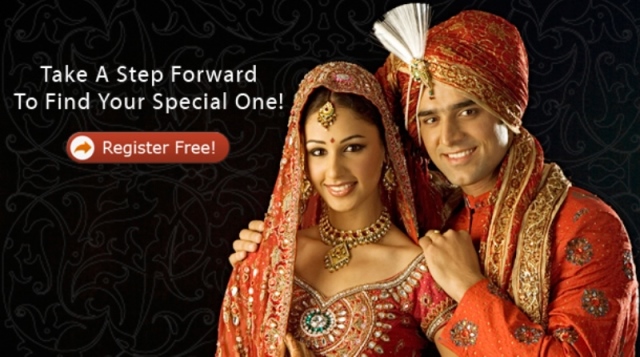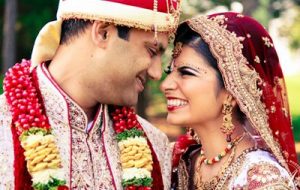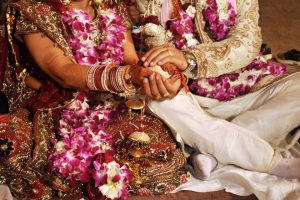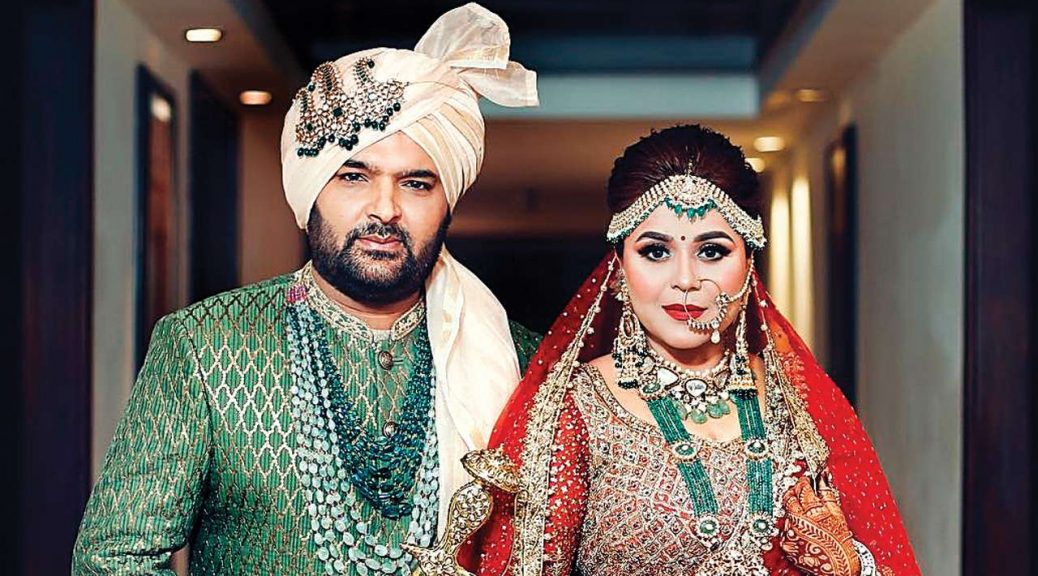
Punjabi Wedding and its rituals
Punjabi Matrimony & Its Rituals & Customs
Punjabis are easy but fun-loving people who believe in expressing their emotions. Similar to their nature, Punjabi marriage reflects their life philosophy. Punjabi marriages are fun, loud, sometimes at the top, singing and joking with many opportunities to dance to their own heart. Punjabi weddings can be easy or too much, but they ensure unlimited fun and celebration. A host of pre and post-wedding occasions will make a Punjabi wedding a long and enjoyable affair. Although, Punjabis do not miss the opportunity to be happy, although their marriage shows their tendency to follow the old tradition, although occasionally they also have the conventional wrapping. From a wide Lehnagus to the Crystal Bury, ‘The Music Until You Drop’ is very friendly and warm welcome, a Punjabi wedding is like a true roller coaster. Let’s look at different wedding ceremonies.
Roka and Thaka –
If all the views of the marriage are satisfactory, the groom’s family is allotted for the dismissal of the bride, so that she is blessed with various gifts for the money, such as groom, ice, clothes, shagun etc. This custom is known as rock. The bride usually does not appear at the rocks. Gift reciprocates the gesture by visiting the family of the bride on a wedding day to gift gift gifts to the groom’s family. Known as the return ceremony. These two people usually live with close family members with fewer basic issues. The Roka program marks the beginning of the relationship between the two families and usually starts a small worship in the name of ord.
Mangni/Sagai–
This ceremony marks the official engagement between couple. It is often a grand ceremony and at least a few months before the wedding. Collected from both the family and friends on behalf of the bride and groom. The bride is fed rice and milk fed by the groom’s family. Couple exchange rings in the mood of a celebration. The Sagai ceremony makes the match an official.
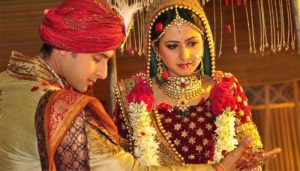
Shagun and Chunni Chadai –
In order to identify the bride’s identity among the groom’s family, the Chuni festival was celebrated. A group of women reached the Prophet’s house in the morning or a day before. Along with jewelery, sweets, fruits, mawa etc. Sagaiyah, the bride dresses the clothes she brings with them. The special part of the gift is a complexly decorated head scarf or chunky Chuni is kept in the head of the bride and her face is covered with curtains. This event is known as Chuni Chadna. Then she is a gifted jewelry, such as punk or necklaces, which is her family hairdressing by her mother-in-law, who helps her keep her. To make the show happy, a little hena is applied in his palm. This gift of the bride is known as Shagun
Sangeet – Music is usually arranged by the bride’s family by a musical party. Traditionally, the family lady meets together and the bride is sitting around. Together, they make people happy by singing, bridal teasing, and dance. The groom and some of his family members were invited to participate. Nowadays, music is a gala event, when both families combine to enjoy the fun music evening. The parties on both sides are often choreographed by experts by dancing. This is a great opportunity for families to get acquainted with each other.
Mehendi –
Mehdi is an indispensable part of the Punjabi wedding ceremony. The bride is sitting down on a special mall and the clay paste is applied on her hands and feet. Clay design is complex and wide, and the groom’s initials are hidden in various patterns. Drying gives a dark red color. It is believed that dark colors of Mehdi’s color will get more love for his father-in-law. Previously, family members used Henna Paste but nowadays professional mercenary artists are hired. Hena, the other female member of the family, is in her hand. The same mehdadi ceremony is performed in the groom’s place but in small scale. Generally, a very simple Henna design is applied to the groom’s pump. Traditional wedding songs are sung during the whole ceremony.
Wedding Attires
Wearing a set of kurta pajas traditionally for Punjabi bride groom. Kurtas can also be associated with churidar trousers. The designs on these sneakers are usually overwhelming and wide. Nowadays, we wear Punjabi Sarovani boards. Preferred color with a lot of clasp, including cream or off-white issued threadwork, bedwork, and stone decoration. In complementary colors like blue or mortal, she adds Shervani to pajamas or steals. She wears a dupatta around her neck. She wears a traditional pair or more modern loafers with full outfit. She wear a helmet with dangling her string of flowers or decor ribbon and even her face covered pearls. This special helmet is known as Sehra. The top of the top is attached around the forehead of ice and tied behind its head.
A sight to see the Punjabi bride. A superb Lehenga and a lot resplendent in fashionable jewelry, she walked beauty. The Punjabi Brides are very picky when their wedding comes to Lehnga and loves to go all the way for perfect. Though traditional red color is the traditional wedding color for all Indian brides, but Punjabi brides are known for other colors like green, gold, fuchsia and orange. He connects Lehnga with a matching doptter with which he keeps his head covered. She wears many jewelry, it is something made of gold, when it may be some modern costume jewelry. Some compulsory elements are Mongita, Bangal, Nath, Chuda (a traditional red and elephant-colored bird set in four qualities), Kamarband and Paizania. The bride’s daughter closed a set of her wrists. It is gold or silver ornaments which are dome-shaped with multiple danglers attached to them.
Jago –
On the wedding night, the family wakes up at night and wakes up in the early morning. A brass or copper alloy is equipped with soil light. The bride / groom’s drunk aunt or aunt carries a vessel over her head and the other woman tries and reduces it with a long rod attached to the bell. Ladies will sing Punjabi songs and at home in the house of friends and relatives who are having sweet food. Then they dance together before going to the next house.
Gana Bandhna – On the morning of the wedding, in their respective homes, the Punjabi bride and groom joined the worship. After the completion of the worship, priests are related to a sacred thread or a fundamental right in their right wrist. The moulti is surrounded by a berry nut and a shell called Kaudi. It makes it difficult to thicken around wrists more than once.
Chooda Chadana – Charu usually refers to a set of red and elephant bungalows in a set of four qualities. The big uncle of the bride has an important role to play in this event. Mother or mother is sitting for a havan, during which the liquid is mixed with honey and rose petals. The face and face of the bride is covered under this ceremony, since she does not see the chad till the Punjabi wedding. Then Mama and his wife put Chuda into the Prophet’s hand. Other elderly members touch Chouka and bless them. The flower petals are raining on the bride. She was given her wedding Lehenga gifts by her mother at this time. The bride’s friend, the daughter is related to her wrist or one of her fingers, which is covered with umbrella-shaped ornaments which are often coconut, dried fruit or dried nuts.
Haldi – Four lights or lights are lit and the bride sat on a low wooden body facing them. A paste made from sandalwood, yellow, pink and mustard oil is prepared. This paste is applied on the body of the bride, especially the face, feet and feet by the married woman in the family. It is believed that the grandmother’s glitter will give an eternal light on the face of the bride. A similar ceremony is also performed at the groom’s home. Family members adapt each other to the same paste and maintain the environment of happiness and tranquility.
Ghara Gharoli: At the end of the Panjabi matrimony ceremony, the dried raw paste is removed from the face and body of the bride. Then he takes a nearby temple where he is bather with full pitchers of holy water. This event is known as the house cell of the house. Then he prayed for a blessing to the god of the temple. She returns to her home and takes a suitable shower and starts getting ready in her wedding Finery. The same ceremony is also observed by the side of the groom.
Sarbala – Serala refers to the groom’s caretaker. Usually this section and groom are selected a child member of the family for similar dons clothes. Then she accompanies the wedding with the groom.
Sehrabandi and Varna: The groom wearing her wedding sarwani and the clerk dress. A small worship then takes place in his honor. During this worship, the priest’s turban and sehra are sacred. Turbine and sherre tied around the head of the groom or the husband of a family or elder brother.
Ghodi Charna – Traditionally, the Punjabi groom set off for a flour tortilla wedding venue. Dirt is decorated in the minor decorations and Tika is applied to its head. Chandra Dal (rust) and water are fed by the bride’s relatives. The groom’s mother-in-law then applied surma to the groom’s eyes for ward off the evil vibes. The groom mounts in a formal manner. Then set off with her family members as well as for wedding venue. The wedding procession is accompanied by a band that plays papar music and drama members of wedding procession.
Agwaani and Milni – Groom wedding with wedding procession comes to the venue. They are meeting the party sides of the couple. At this moment the love and warmth of Punjabi is very clear at the moment where two families smile and embrace each other. This event is known as Aguani when the bride and her family arrive at the wedding venue. The groom is then welcomed by the bride’s mother with a traditional arti and tika on the forehead.
The relatives of the groom are then sought by relative relative to the bride’s side, for example. Bride’s mother asked the bride’s mother They greet each other and welcome inside the venue. This event is known as Milniya.
Varmala– When entering the wedding hall, the groom was taken to the stage and he was raised on a small altar. At the appointed moment, the bride arrives at the bride’s level and the couple exchanges marriage with Malala. This is a fun ceremony where there is competition for raising the discrimination between the two parties so that no one else keeps the garland over his head.
Madhuperk– The bride and groom then proceed to the wedding Mandap and offer a small bowl to drink the groom. He sprinkles some on his feet and drinks the rest. Then he was given special concoction made with fat, honey, milk, ghee and other sacchar extract. It is known as Madhuparak. The bride will stop this drink before the wedding ceremony begins.
Kanyadaan – In this era, the ancient Vedic ceremony, his father was given to the bride. The groom pleads with her requesting the groom to take care of her daughter and the groom accepts his prophet’s hand and promises his father that he will be using him with utmost love and respect throughout his life.
Get married, the holy fire that burns. In Hindu customs, fire god is the main witness of a wedding. There are fourteen parallel lines drawn on a flour bed with a flower, which is handed a plate to the groom. Line is a wedding fourteen promissory symbol. The priests make a pledge after Vedic Mantra. Repeat after the groom her and removed one line with a flower bud.
Phere– Next, the couple gets up. Then the last of their boots are tied in a knot and they encircle four times in the holy times. For the first three times, before the bride groom and return to the final she has to follow the groom.
Lajahom: For this event, the bride’s brother poured rice on her shoulders and poured rice. The bride and groom then ask these proposals together with fire and seek God’s blessing. This show is repeated three times.
Sindoor Daan– After the end of Lajham, the groom uses the scion in the hair of the bed and closes the mulasutra around his neck. This wedding ceremony is complete.
Joota Chhupai –If the groom is busy in marriage, the groom’s sisters hold his shoes and hide them. When the marriage ends and the groom goes out of the marriage arrangement, they demand ransom to return the shoes. There are many tenders involved in both parties and they come to an agreement. The groom will pay the amount on the allotted amount to get the shoes back and move from Mandap.
99marriageguru provide best online matrimonial website for Punjabi. You can register free for millions of Punjabi brides & grooms.
